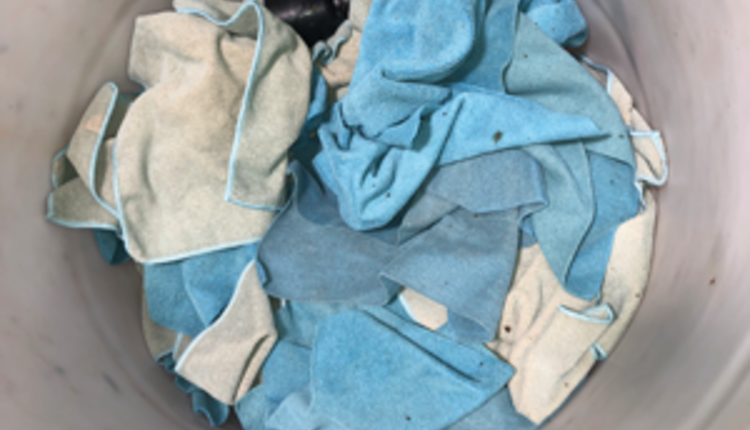
Spring is arriving. The birds are chirping and days are getting longer. Just maybe, our arthritis is starting to feel a little bit better. During this busy season, new life emerges across the dairy world — including environmental pathogens eager to trigger new cases of mastitis. Now is the time to review parlor procedures and stall hygiene practices to reduce the risk for environmental mastitis.
Prototheca, that colorless, chlorophyll-lacking algae, will soon be causing problems again. Think of it as similar to the algae that grows in your swimming pool or pond. However, its lack of chlorophyll means it does not need sunlight to grow. Like many environmental mastitis pathogens, it tends to cause less mastitis during the winter months and starts to cause havoc when the temperature rises. There is a definite seasonal effect when it comes to Prototheca mastitis (Figure 1).

Tricky to control
Mastitis from Prototheca bovis has been escalating on many of our large freestall dairy facilities. From the environment, it gains access to the mammary gland through the teat orifice and cistern. Once established as an intramammary infection, it causes chronic mastitis and is capable of contagiously spreading to herdmates during milking.
Often, mastitis is clinical with visible flakes and clots, but subclinical mastitis is also common. Somatic cell count may be elevated in the affected quarter, but not always. Generally, the affected animal does not get sick with fever or other systemic signs. Because it is an algae, antibiotic treatment is not effective. Most affected animals are culled.
Prototheca has been impossible to eliminate from the environment. Any place where manure and other moist, organic matter exists and cows walk or lie — stalls, pastures, or alleyways — becomes a potential source of infection.
Need clean water
During the spring and summer of 2023, Virus Shield Biosciences and Quality Milk Production Services joined forces to reduce the presence of Prototheca in the environment. At a large, commercial dairy in upstate New York, the number of cases of Prototheca mastitis had been on the rise during the spring and summer months for the past few years. We suspected the milking parlor flush water, holding area, and exit alley as risk factors contributing to 91 Prototheca mastitis cases in 2022.
All fresh water used to hose down the parlor and wash the milking system was collected into a 3,000-gallon tank. After each milking group, the parlor entrance and exit was flushed with the holding tank water. The flush system was activated to remove manure from the holding area and exit alley at the end of each milking group. Although no animals were in the direct vicinity of the flush water valves when triggered, cows were held in these areas with flowing flush water potentially splashing up and contaminating teats and udders.
Chlorine dioxide was applied to disrupt Prototheca biofilms in the flush water holding tank and to remove existing biofilms in the holding area and exit alley. From March to September 2023, the flush water tank was routinely shocked with ultra-pure chlorine dioxide at 500 parts per million (ppm) to break down Prototheca biofilms, reducing the presence of Prototheca in the flush water and cutting the number of cases of Prototheca mastitis by 60%.
The flush water tank was initially shocked with 379 liters (100 gallons) of chlorine dioxide (100 ppm), followed by maintenance doses of 19 liters (5 gallons) of chlorine dioxide (500 ppm). Initial shocking of the tank immediately eliminated Prototheca from the flush water, and this absence lasted five months. From March to July, confirmed Prototheca mastitis cases dropped from 50 in this time frame in 2022 to 14 in 2023 (a 28% reduction).
Prototheca was detected once again in the flush water in late July, with 19 mastitis cases occurring in August. Weekly shocking of the flush water tank in August 2023 eliminated Prototheca from the flush water and reduced mastitis cases by 36% in September 2023 (five cases) compared to September 2022 (14 cases), as shown in Figure 2.

With the number of cases continuing to drop, Prototheca has become less of a concern on this particular farm. In 2024, we will continue to shock the flush water tank and monitor cases of Prototheca mastitis.
However, we will also focus on learning how to reduce populations of other organisms in the environment, such as Streptococcus bacteria. Proper parlor procedures, maintaining a clean and dry environment, and the use of disinfectants such as chlorine dioxide in innovative, eco-friendly, and cost effective ways to reduce pathogen populations in the environment may help ease the seasonal spike in mastitis rates we see during warmer months.





